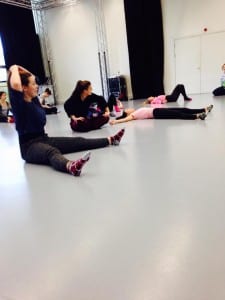This week I have decided to focus on the progression of movement memory. Movement memory is a physical skill and I agree that the skill is very important to a dancer in order to be able to perform effectively.
“The key with movement memory is that you’re exercising the mind and the body. The body gets used to doing a movement after it has done something any number of times, the mind also adapts so that it has to think less in order to perform that function” (The Dance Routine Corner, 2010).
This online quotation suggests why it is important for the cohort to keep revisiting the phrases that they have learnt, so that they embed the movement both physically and mentally. I can see that through revisiting the phrases for the last twelve weeks the class are embedding the sequences into their movement memory and are now able to focus on performing them effectively. I believe that as a whole the cohort should be able to recall movement from their movement memory faster than they currently are doing, therefore I believe it is a skill which still has room for development.
